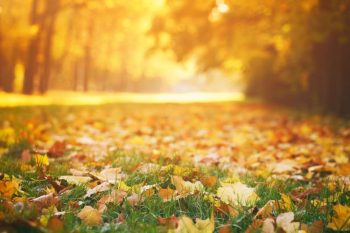 It can be difficult to achieve thick green grass, depending on the steps you take. Plus, it’s also easy to make mistakes that can affect the grass for a long period of time. Here are some useful tips towards reaching this goal:
It can be difficult to achieve thick green grass, depending on the steps you take. Plus, it’s also easy to make mistakes that can affect the grass for a long period of time. Here are some useful tips towards reaching this goal:
Cleaning
The first step is to clear the debris from your yard. Remove leaves and twigs, as well as anything else that is laying in the grass. Anything that is covering the grass is no good for it, as the debris can block light and trap moisture. This is harmful for the grass, so it’s best to keep it clear at all times.
You can either use a leaf blower or a rake, depending on what you have available. A smaller yard may not need a blower, but they are handy for excessive foliage, such as during Autumn when trees begin to shed their leaves. However, a rake allows you to easily get into tough spots where debris accumulate, such as beneath the shrubs.
Mowing and Mulching
Many choose to leave light debris on the ground so that the mower can shred it when they mow the lawn. Some even gather leaves to redistribute to other parts of their lawn, for mulching. This is a free and simple way to enhance the health of your topsoil. Smaller particles do just fine for this, but be sure not to leave any larger sticks behind that could snag your mower.
You can continue cutting the grass until the first frost arrives. Once this does occur, mowing is finished for the season. Make sure your mower has sharp blades and a cutting height of 1- 1 ½ inches. This is the perfect height for healthy grass. Any longer and you can have issues with the grass matting, causing further issues like snow mold.
Watering
You want to keep watering regularly until the weather begins to change. The cooler weather will bring more rain and less evaporation will occur. That means that your irrigation schedule can be relaxed a bit.
However, the grass will still need watering every now and then, to keep the roots fed and hydrated. You’ll want to do this until winter sets in. Once it gets cold enough that you risk freezing the ground, you may stop watering altogether for the season. As stated above, failing to do o can risk snow mold and other fungal diseases.
It’s a good idea to install an irrigation system that will water the grass on a timed system. That means you won’t have to do it manually, and the grass gets the same amount of water each time. Such systems are easy to adjust when it comes to reducing the watering schedule as the seasons change.
Be sure you flush the irrigation system once you are done for the season. You don’t want the water to freeze and damage the pipes.
For more details on when and how to water specific grass types, check out this helpful Lawn Watering Guide.
Aerating
Once a year, it is also a good idea to aerate the soil. This will prevent it from getting compacted. A thick layers of roots, stems, debris, and tightly packed dirt can prevent water ingress and stop the deeper roots getting the food and nutrients they need.
Aerating the lawn is a good way to prevent compacted topsoil and excessive thatching. It also helps enhance the absorption of both water and fertilizer. A well-aerated lawn can quite literally eat, drink, and breathe more effectively.
Fertilizing
Finally, just before the winter weather arrives, it’s a good idea to fertilize the freshly cut, aerated ground. Applying late fall slow-releasing fertilizer that is granulated will help prevent root damage from the freezing weather.
Additionally, fertilizer can help prevent disease and enhance drought tolerance. It also gives your lawn the nutrients needed to bounce back quickly next season as spring arrives.
Visit our Lawn Fertilization service page to learn how we can help!
